Transition or Transformation
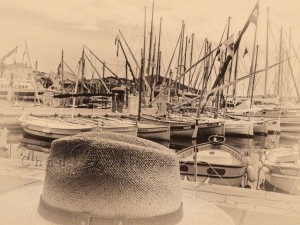 The year has been productive as far as changes within my style and understanding in what I am doing with photographs. It’s been an interesting display, for me, at least, between the right and left sides of my brain. The right side seeking form and creativity, and the left side begging for order and direction. Luckily there has been an amicable compromise between the two and my shooting and processing has taken on more of a creative direction, which was aimless in the recent past.
The year has been productive as far as changes within my style and understanding in what I am doing with photographs. It’s been an interesting display, for me, at least, between the right and left sides of my brain. The right side seeking form and creativity, and the left side begging for order and direction. Luckily there has been an amicable compromise between the two and my shooting and processing has taken on more of a creative direction, which was aimless in the recent past.
I have revisited several of my photos of years past and have tried to look at them afresh and see what I would do with them in my current state of creative flux. The current post is of Sanary-sur-Mer, France where I was dining at the time a few years ago. Of course I had on my de rigueur Panama hat which I bought in Sorrento, Italy, so I felt quite International (although I doubt this is how I actually appeared).
The south coast of France on a sunny late Spring Day. This is what I imagined I wanted to capture in my photo. I had tried to do this in the past and had failed, but with my last attempt I believe I came close to the mark, if, nothing more than with nostalgic, halcyon type of overtones.
The photo was taken on a Canon 30D, 24-105mm, f/4L IS lens @ 24mm, f/22, 1/400, ISO 1600. It was an unusually noisy and dirt prone camera which I have since parted company. However, I always wanted to capture that special sense of place there in France at the sea port. This I believe I approximated using DxO Optics Pro 11 and Nik Silver Efex Pro 2 (Antique Plate preset) in post processing.
Was it Endórë or Iceland?
- At August 31, 2016
- By Firstmate
- In Canon EOS 5DS, DxO Optics Pro, Iceland, J.R.R.Tolkien
 0
0
This is an image of Kirkjufell Mountain, west of Grundarfjordur, in Snaefellsnes, Iceland. But it easily could have been from J.R.R.Tokien’s mythological land of Middle Earth or using his language from the myth, Endórë, because it presented as quite alien and unusual as compared to the work a day world in which we all live.
My recent adventure to Iceland in July was productive albeit challenging due to the weather. Because of the many water falls, volcanic activity or remnants of it, and the utter ruggedness of the countryside, there were multiple opportunities to capture winning photos, of which I did. Since that time I have spent time learning new post-processing technique to let my original raw photographs come to life.
This present posted photo is obviously a panorama, shot with a Canon 5 DS, a 24-105mm L lens, at 24mm, f/16, 1/640, and ISO 800. Post-Processing was accomplished with DxO Optics Pro, Adobe Camera Raw, and Photoshop.
Land of Dreams
- At July 25, 2016
- By Firstmate
- In Canon Powershot G3 X, Switzerland
 0
0
This post of a most beautiful and dramatic place, namely Lucerne, Switzerland, is offered as a challenge. You see, Switzerland has always held an exalted place in my subconscious for the purest and most unspoiled place on the planet. The photo is of Mount Pilatus taken from the city of Lucern on a day of dramatic weather changes,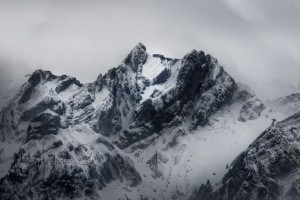 occurring in early May with a Spring snowstorm.
occurring in early May with a Spring snowstorm.
I had planned to ascend Mt. Pilatus on this day but Nature thought otherwise. So, I stayed in Lucern and was content to view it from afar, simply because if I had ascended Mt. Pilatus I would have been in a fog or snow storm without any vision at all. The best I could count for my stay in Lucern was this photo from across Lake Lucern, which, when one thinks about it is not that bad. Of course, or unless one realizes that the dramatic view could have been increased a hundred-fold if one were at the top of Mt. Pilatus itself.
The photo of Mt. Pilates was taken with a Canon Powershot G3 X, 126.4mm (344mm, 35 mm format equivalent), f/11, 1/320, 125 ISO, using DxO Optics Pro 10, and Photoshop for post processing.
Keukenhoff: Chance Encounters
- At July 08, 2016
- By Firstmate
- In Canon Powershot G3 X, Holland
 0
0
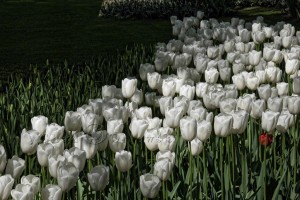 On my most recent trip to Europe down the Rhine Valley in the spring, it would have been remise not to visit Holland in all its glory, namely tulips in bloom in aeternum. This I did with my wife, and the whole experience was a bit overwhelming in many ways. For approximately two months this area of Holland, specifically Keukenhoff Gardens is visited by millions of world travelers. That means if one is interested in photographing tulips, these shots will inevitably have people in them. That is the challenge I faced.
On my most recent trip to Europe down the Rhine Valley in the spring, it would have been remise not to visit Holland in all its glory, namely tulips in bloom in aeternum. This I did with my wife, and the whole experience was a bit overwhelming in many ways. For approximately two months this area of Holland, specifically Keukenhoff Gardens is visited by millions of world travelers. That means if one is interested in photographing tulips, these shots will inevitably have people in them. That is the challenge I faced.
Secondly, the size of the gardens and arrangements are beyond description, either visually or in words.
Some luck was on my side, since I was at the gardens in the early part of the day. There were people but not the crowds which amassed a couple of hours later.
The challenge was also before me of the particular light of the day. Sometimes harsh, but not always. I was constantly looking for that window or edge of soft light. Hopefully in the photo I approximated that special sense of beauty which is called Keukenholl — Holland in Bloom.
Der Schwarzwald In Transit
The title to this post is not as enigmatic as it appears. It is in the flavor of my recent posts of light and darkness, black and white. In my just finished visit to the Rhine Valley I was fortunate enough to catch a spring snowfall on the very morning that I was approaching the Black Forest (viz., Der Schwarzwald). This was such a contrast in not only the visual but also the experiential terra firma where the unexpected was suddenly upon us.
Unfortunately, I was in a bus traveling along a narrow road with magnificent scenery around me. I was spell-bound, but I wanted to take a picture to capture this transcendent moment. My first impulse was that it was not possible traveling in a bus with a camera that was not my best (simply a small tourist camera), but my wife stated emphatically, “Yes, indeed, take the photos!” As an obedient spouse I compiled, not having much hope of success.
Needless to say, my wife was right. I was able to salvage several quite extraordinary moments. Whether these moments translated into good photos was another matter. This photo of a farm on a mountainside in the midst of a sudden spring snow storm is my attempt to relay a very transient moment. On reflexion, this appears that many great photos are all about these transient moments (hence, “in transit”), that try to capture the ephemeral but also the equally eternally transcendent.
The shot was taken with a Canon Powershot G3X, 24 mm, f/8.0, 1/800, ISO 125, enhanced with DxO Optics Pro, with tonality adjusted in Photoshop.
Conflicted Image
- At April 21, 2016
- By Firstmate
- In Black & White, Germany
 0
0
About this time a year ago my wife & I were in Nuremberg, Germany and we both were overwhelmed by the architecture, milieu, food, and history. It was our first exposure to Germany and it was a positive one. We had the opportunity to explore the Nuremberg Castle and the old town, which captures the essence of so-called fairy tale type images of Germany (think of Grimms’ fairy tales).
But there was a darker side to Nuremberg (not of its own making), and that was that it was seen by Adolf Hitler as the the quintessential German town, and chosen by him as the site of the Nazi Party Conventions, the Zeppelinfeld or Nazi Part rally grounds.
I wanted to capture that part of history since I grew up with it and had a hard time coming to terms with the cruelty of that part of German history. The tour guide on our visit of the Zeppelinfeld spoke of the conflicted attitudes of current German citizens to that part of their history, i.e., should it be preserved (at an expense) or should it simply be allowed to fade into the past without saving such vestiges as the Nazi parade/rally grounds.
There were many photos I took of that part of German history while I was in Nuremberg, but only recently was I able to feel comfortable with capturing what I felt when I visited that former Nazi rally grounds.
Specifically, the color photo did not capture what I felt. But then I realized that I must submit to how that part of history settled onto my visual memory, namely, black and white imagery.
So, I searched for the image that most captured that time of Germany’s dark past. I finally found one photo where the heavens opened up to shine on the center stage/platform where Hitler spoke in historically passionate terms of total war and global conquest. To me it was an image of contrast, and an image of conflict. Was the heavenly light shining on the former Hitler platform that of acceptance or was it that of final judgement, i.e., it was an empty stage of lost opportunity and unfulfilled and ill conceived ambitions. It was an image that the purifying light of the heavens shines on the emptiness of man’s folly and empty ambitions. That was the judgement of history and world time.
The actual photo of the Nazi rally grounds was crafted to this final image by using Photoshop to eliminate the two large light poles and many fence posts preventing people from accessing the stands. Notice that there are no actual Nazi symbols located anywhere. We were told by the tour guide that Nazi symbols do indeed exist but not in areas of public access. (Again, an element of conflict.)
Ars Artis
- At February 13, 2016
- By Firstmate
- In Black & White, Canon 30D, France, On 1 Photo 10
 0
0
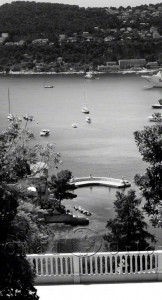 The last month or so, despite an absence of blog posts, has been a productive period for me. Time has been spent focusing on skill development of post processing of black and white photos (à la Vincent Versace). Several series of photos from France and Italy I revisited, and tried to re-imagine them through Vincent’s eyes. It was a slow process of trying to acquire an understanding of light and contrast as well as what I really wanted in a scene. The path was not always clear but I trudged onward, nonetheless, knowing that progress had to be made, despite my uncertainty on what lay before me.
The last month or so, despite an absence of blog posts, has been a productive period for me. Time has been spent focusing on skill development of post processing of black and white photos (à la Vincent Versace). Several series of photos from France and Italy I revisited, and tried to re-imagine them through Vincent’s eyes. It was a slow process of trying to acquire an understanding of light and contrast as well as what I really wanted in a scene. The path was not always clear but I trudged onward, nonetheless, knowing that progress had to be made, despite my uncertainty on what lay before me.
On the way to understanding black and white I actually discovered that I was beginning to understand the technical aspected of photography itself better. For example, the importance of pixel count, bit depth, and how to use photoshop more efficiently and fully (i.e., channels and blending modes, not to mention finally feeling more comfortable with curves and its power).
There seemed to be an interplay within me of technique and style, and how advancing in the discovery of one leads to a better grasp of the other. This is somewhat abstract, admittedly, but it was a growing experiencing I am trying to document.
The photo in this post is of the Côte d’Azur (French Riviera) seen from the Rothschild’s Villa and Gardens. It is a truly idyllic location of tranquility and beauty. It was taken on my old Canon Eos 30D (a very noisy and dust prone camera), using a 24-105mm L lense. I converted the color photo using Photoshop Gradient Map adjustment layer as well as On 1 Photo 10 for Vignette Effects.
Four Quartets
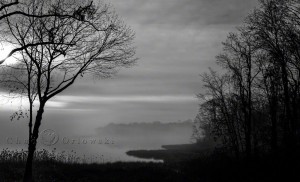 This enigmatic blog title is from T.S.Eliots’s poem of the same name. It has always resonated for me since I am committed to the dynamic nature of the way life presents itself; namely, in a series of apparent contradictions in an attempt to show us the sheer complexity of itself.
This enigmatic blog title is from T.S.Eliots’s poem of the same name. It has always resonated for me since I am committed to the dynamic nature of the way life presents itself; namely, in a series of apparent contradictions in an attempt to show us the sheer complexity of itself.
Enough of philosophy, though, and on with photography. Oh, but by the way, an encapsulated meaning of the poem (not doing it real justice) is, as Eliot states, “What we call the beginning is often the end. And to make an end is to make a beginning.”
I am using this reference to describe my current state in trying to become a photographer worthy of that name, and not simply someone that lucks out in taking photos, i.e.hit or miss. That current state is, unfortunately, one of unsuccessful attempts to acquire a thoroughgoing process of conceptualizing, actually taking, then processing, and finally printing the photograph I had in mind when I stood in front of the scene before me with my camera. After several years of trying to acquire skills through reading, attending workshops, and then experimenting with different techniques, I am left unfulfilled and inchoate.
But fate has smiled on me, since I recently discovered an artist and teacher worthy of those titles. His name is Vincent Versace. After reading an interview of him and also an articled on processing black and while photos, I purchased his book, Welcome to Oz 2.0. It is the second revision of his original work, Welcome to Oz, but I would have to say that he has so much information and pearls of wisdom in this book that I feel that I have found a gold mine.
After recently hitting the nadir of photographic growth I believe that I have been saved by whatever guardian there is of photographers that watches over us.
I am posting a photo of no consequence subject-wise, but one I feel challenged me to use some of the ideas that Vincent Versace expressed. I used a gradient map to make a black and white photo of a misty morning. I chose this scene since it seemed to challenge me to understand and bring out the tonality that was before me. These are very simple concepts to the accomplished photographer but not to me, who was trained to think verbally, not visually.
The photo was taken in full color with a Canon 5 Ds, using a 16-35mm lens, f/2.8, @35mm, f/11, 1/250, iso 250. Conversion to BW done in Photoshop, Gradient Map, and denoised in DxO, and stylized in On1 Photo 10.
Valley of Darkness
It has been a struggle recently to engage in photographic creations. I must be going through a transformation of schemata in what I want or want to see in the world around me. Since the range of these schemata or modes or ways of visualizing what is before me is infinite, I must rely on my deepest intuitions to non verbally grasp them and bring them into the light of conscious thought.
The tactic I have chosen to accomplish this, at least at this particular time, is to review my most recent photo shoots, and try to pull from them elements that I find attractive. In other words, I find the living moment of actually taking a photograph to be too challenging to focus on exactly what I want. If I may impose an analogy it would be that of a football quarterback who is a rookie versus a quarterback of pro standing. For the rookie time moves too quickly, for the pro time moves slowly. So, only on reflection can I acquire what I want; the lived moment is too fading to control.
That being said, I am still at a loss as to what my spirit or photographic eye really sees. It appears that I am drawn to the shadows. If shadows do not exist, I want to create them.
Also, I found that on my Chappaquiddick photo shoot that I had to compensate again in post processing what was lacking in optimal conditions while on the island. It was very windy and lighting was unpredictable.
I found that my long exposure shots were salvageable, especially of subjects as coastlines, sky and water. One shot drew me to often revisit it simply because of the grass. It seemed the long exposure of the grass in the particular light created an oil-paint-pallet. I stayed with the grass with that paint-like effect and kept the water more contrasted and the sky even more so in On1 Photo 10 software program. The final posted photo is of Katama Bay. The camera was a Canon 5 Ds with a Canon EF 16-35mm f2.8L lens @ 16mm, with settings of f/16 and speed of 36 seconds, ISO 100.
Summer of 15
- At October 27, 2015
- By Firstmate
- In Canon EOS 5DS, Chappaquiddick, iPhone
 0
0
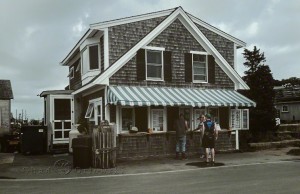 A coming of age movie came out in 1971 titled “Summer of 42”. It was a captivating journey into what life was like in the summer on an island off the east coast of the US, narrated in the first person of a man who depicted what his life was like as a teenager visiting the island for the summer. Besides the movie’s theme song, “The Summer Knows,” what was more haunting was the scenery and mood created for that era. It was akin to a dreamscape, sometimes blurry, sometimes glowing, and sometimes dark.
A coming of age movie came out in 1971 titled “Summer of 42”. It was a captivating journey into what life was like in the summer on an island off the east coast of the US, narrated in the first person of a man who depicted what his life was like as a teenager visiting the island for the summer. Besides the movie’s theme song, “The Summer Knows,” what was more haunting was the scenery and mood created for that era. It was akin to a dreamscape, sometimes blurry, sometimes glowing, and sometimes dark.
I had the opportunity to spend two weeks on Chappaquiddick Island in the summer of 2015. Chappy, as the locals call it, is literally an island off the island of Martha’s Vineyard. I had grand visions of capturing photos that would recreate that vision which the movie Summer of 42 created in my mind. [By the way, before my trip I also watched the movie “Jaws” (celebrating its 40th anniversary).]
Unfortunately, the opportunities which my Summer of 15 presented me were not equal to those visions and vistas in the Summer of 42. That’s not to say I was not trying. For the record I forced myself to shoot exclusively in manual mode in all conditions. I was consciously aware of setting my Canon 5 Ds to what conditions were before me. These conditions ranged from handheld impromptu shots on the beach to shots with a tripod. There were long exposure shots (water, lighthouse, clouds), rapid movement (birds like the Black Skimmers flying inches above the wave, wind surfers), nighttime shot of the moon and milky way, wide angle shots, and closeups of people. I took a little over 400 shots, had several good, sharp photos, but really was only happy with one photo which I posted to the Gallery.
Despite the dearth of acceptable shots I did learn quite a bit. As an athlete must adapt himself to game conditions by only exposing himself to those games (the more experience the better he performs), so I learned that I must constantly be thinking. I believe I am conquering the sharpness problem I’ve had; all I need to do is master the lighting conditions.
The photo I’m posting with this blog entry (shot with an iPhone 5, not a Canon 5 Ds) is of Menemsha Galley in the small village of Menemsha in the town of Chilmark, Martha’s Vineyard. This is the area filmed in the movie Jaws. By far, it is the most quaint area on Martha’s Vineyard, but not the only pictureque. If I ever mature in photography I should find more shots in the future on that dreamy island off the coast of Massachusetts.

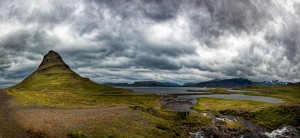
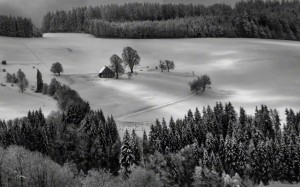
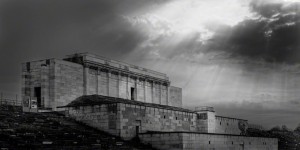
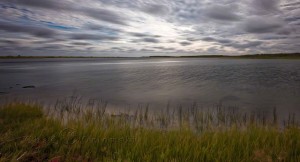
Recent Comments